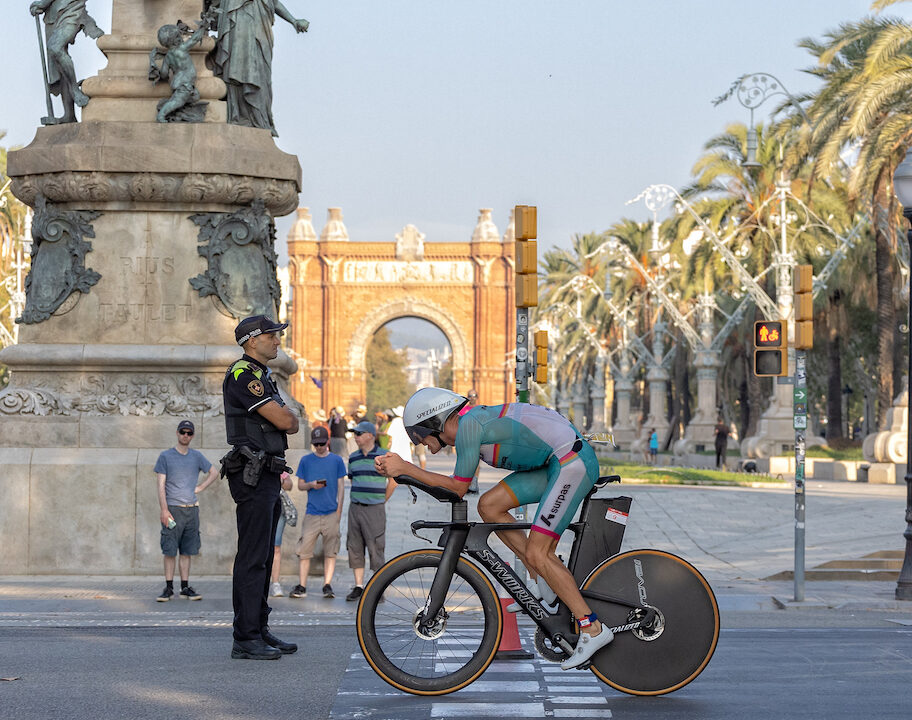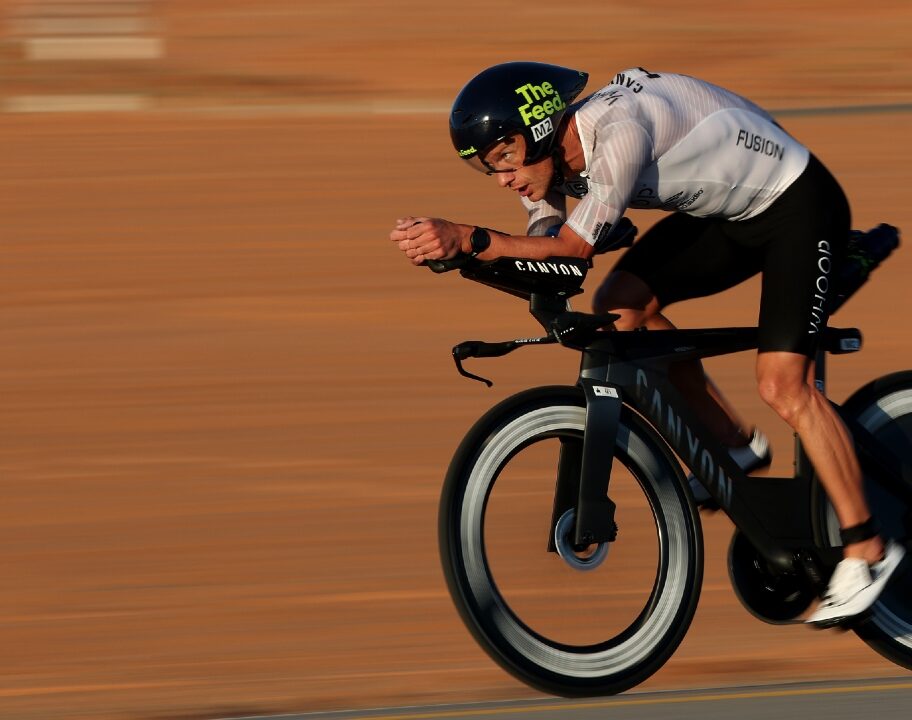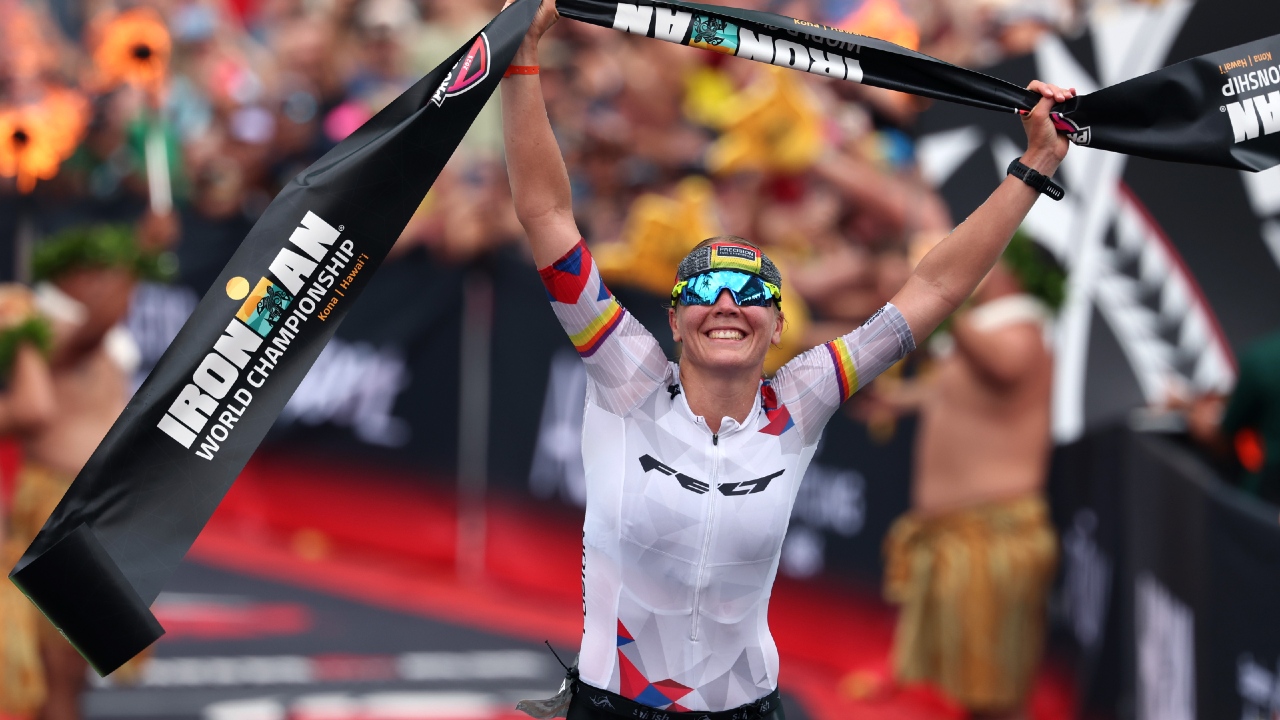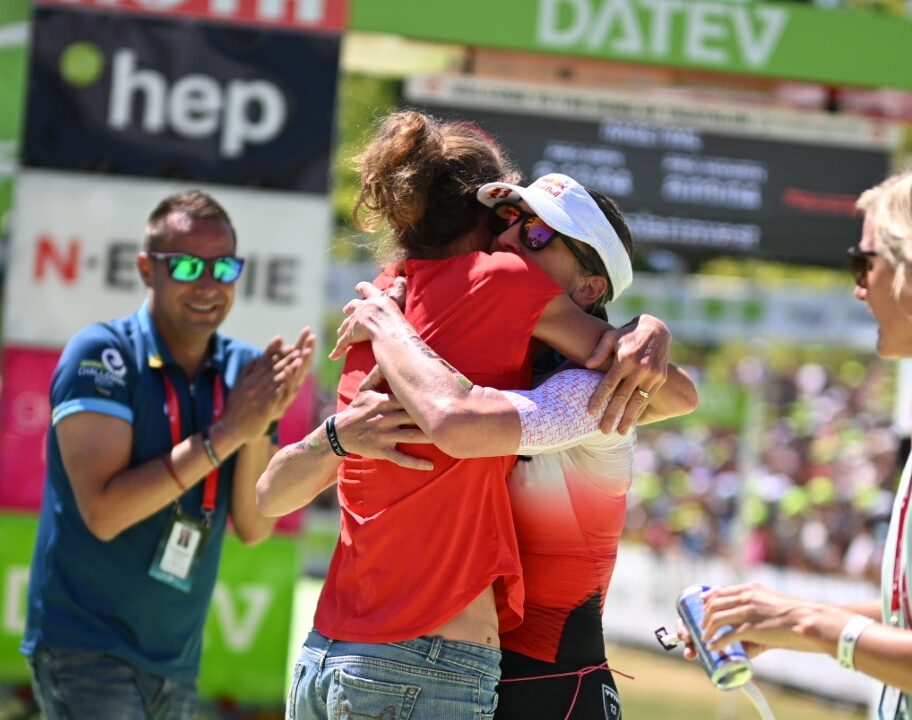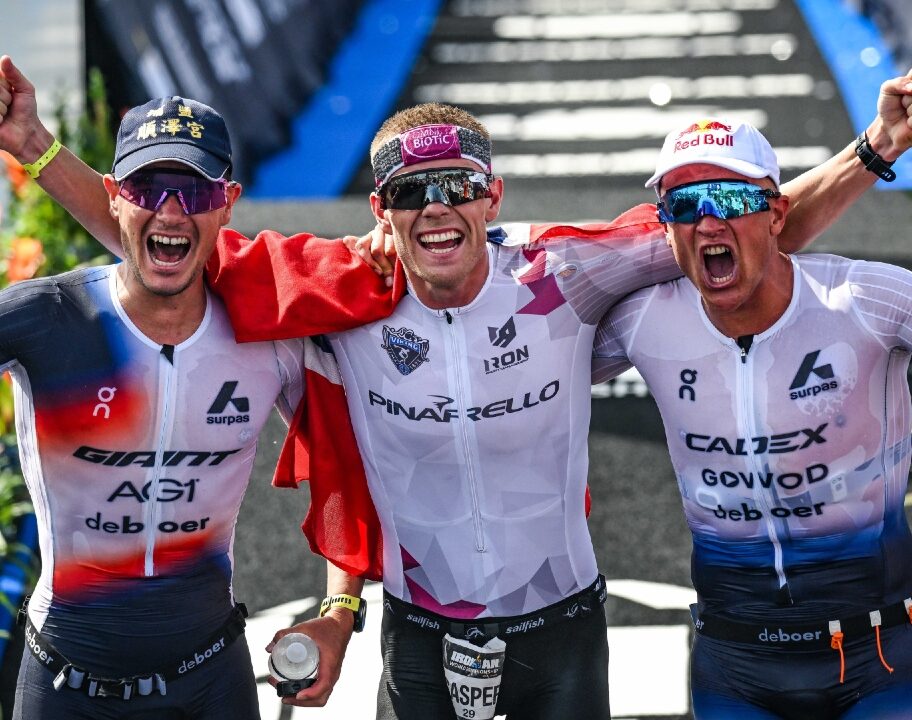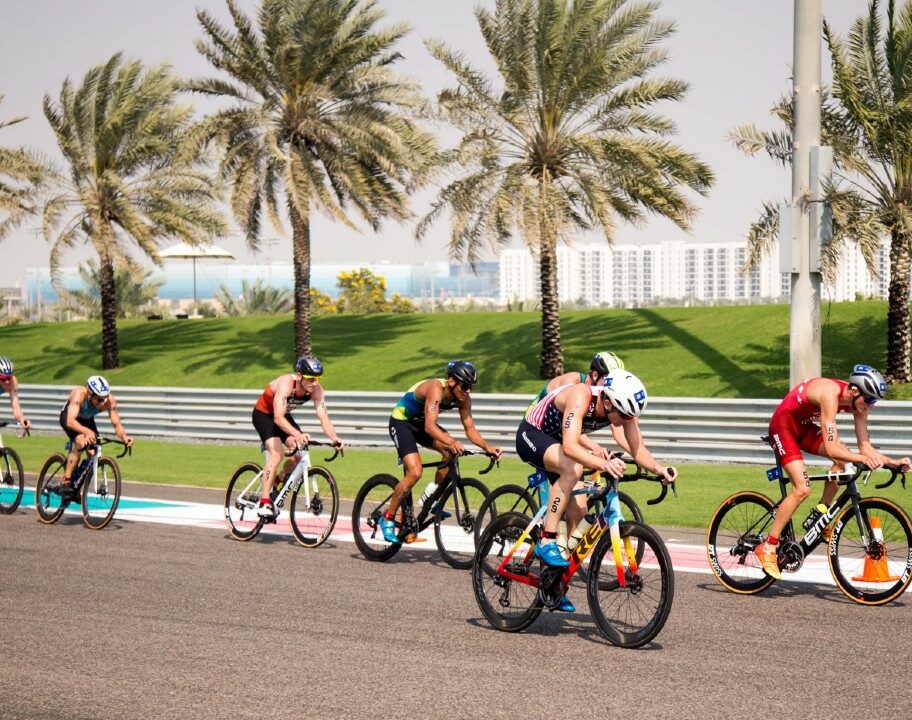There was a first for triathlon on Wednesday when the complete distance data from the RaceRanger electronic drafting detection system at Challenge Roth was put in the public domain.
RaceRanger is an electronic distance measurement system for triathlon racing that detects illegal drafting and documents violations objectively.
The idea of publishing the data was suggested by Sam Laidlow, who went on to claim a spectacular victory in the men’s race, at the pre-race athlete briefing.
There were no objections at that meeting, indeed it was a unanimous vote. And there have been none since revealed the Race Director Felix Walchshöfer at a media briefing on Wednesday.
The athletes themselves in both the men’s and women’s pro fields hadn’t seen the data before it was released – so what does it show?
Fair at the front
The press release from Roth reads: “The race at the front of the field was conducted with exceptional fairness throughout the entire bike course. This is a strong signal for clean competition, welcomed by organisers, professionals, and triathlon fans alike.
“With more than four hours of riding time, the published numbers clearly demonstrate how clean the race at the front was.
“Men’s champion Sam Laidlow and women’s winner Laura Philipp both recorded exactly 0 seconds of illegal drafting time.

“Among the top three men, Jonas Schomburg (0 seconds) and Jan Stratmann (4 seconds) were also virtually flawless.
“On the women’s side, the top of the field was equally fair. Runner-up Grace Thek spent just 14 seconds and third-place Alanis Siffert only 5 seconds in the draft zone – numbers that are barely measurable.”
It should also be said that there was an athlete in the men’s race who recorded over 22 minutes of “illegal drafting time” while one of the top five women was clocked at over nine minutes – full data here.
Positive trend
The system was used the previous year at Roth – but there was no suggestion then of publishing it.
Compared to that, the 2025 data shows a positive trend: On average, the time spent by male professionals in the prohibited zone was 5% lower than in 2024, and for female professionals it was 11% lower.
Roth also took other steps to make the racing as fair as possible.
For example there was seven minutes between the men’s and women’s starts and as a result the quickest female swimmer Alanis Siffert only overtook three of the pro men this year – had it been a two-minute gap she would have passed no fewer than 22.
And in terms of the bike data, RaceRanger founder James Elvery hopes that this now becomes the norm, saying at the media briefing: “It’s a great step forward and hopefully it becomes an accepted part of pro racing.

“I’d like to see it be something we do after every race.”
He – and Walchshöfer – hope that in 12 months time it might be possible to display the data in real-time, to both engage the broadcast audience and be a significant assistance to the race referees.
Elvery added: “We clearly see that the athletes at the pointy end of the field are leading by example, racing as cleanly as possible. The data speaks for itself: it doesn’t get any fairer at the front.
“The openness with which Roth is handling this is absolutely exemplary and an exciting step forward for our sport.”
Could the data be shown in real time in 2026?
“We don’t just want to talk about fairness – we want to make it visible,” added Walchshöfer.
“We’re incredibly proud that the numbers confirm what we all experienced: a very fair race. I truly believe this level of fairness was also a direct result of the agreement to publish the data.
“Of course, race referees on the ground still have the final say on any rule violations. RaceRanger is a technical tool that supports our officials in ensuring a fair competition.”
You can view the data in full here – note that it has been adjusted to exclude certain spectator-heavy sections of the course, such as Solarer Berg, Kränzleinsberg, and Kalvarienberg, as well as the first and last 500 metres of the bike course and all aid stations. These areas were pre-approved by the race jury as exceptions to the drafting rule.






